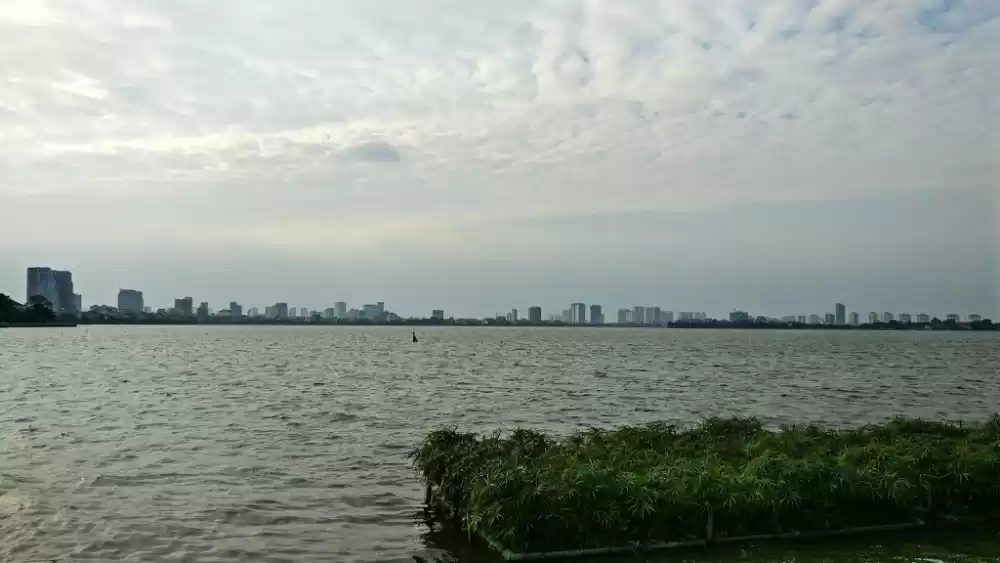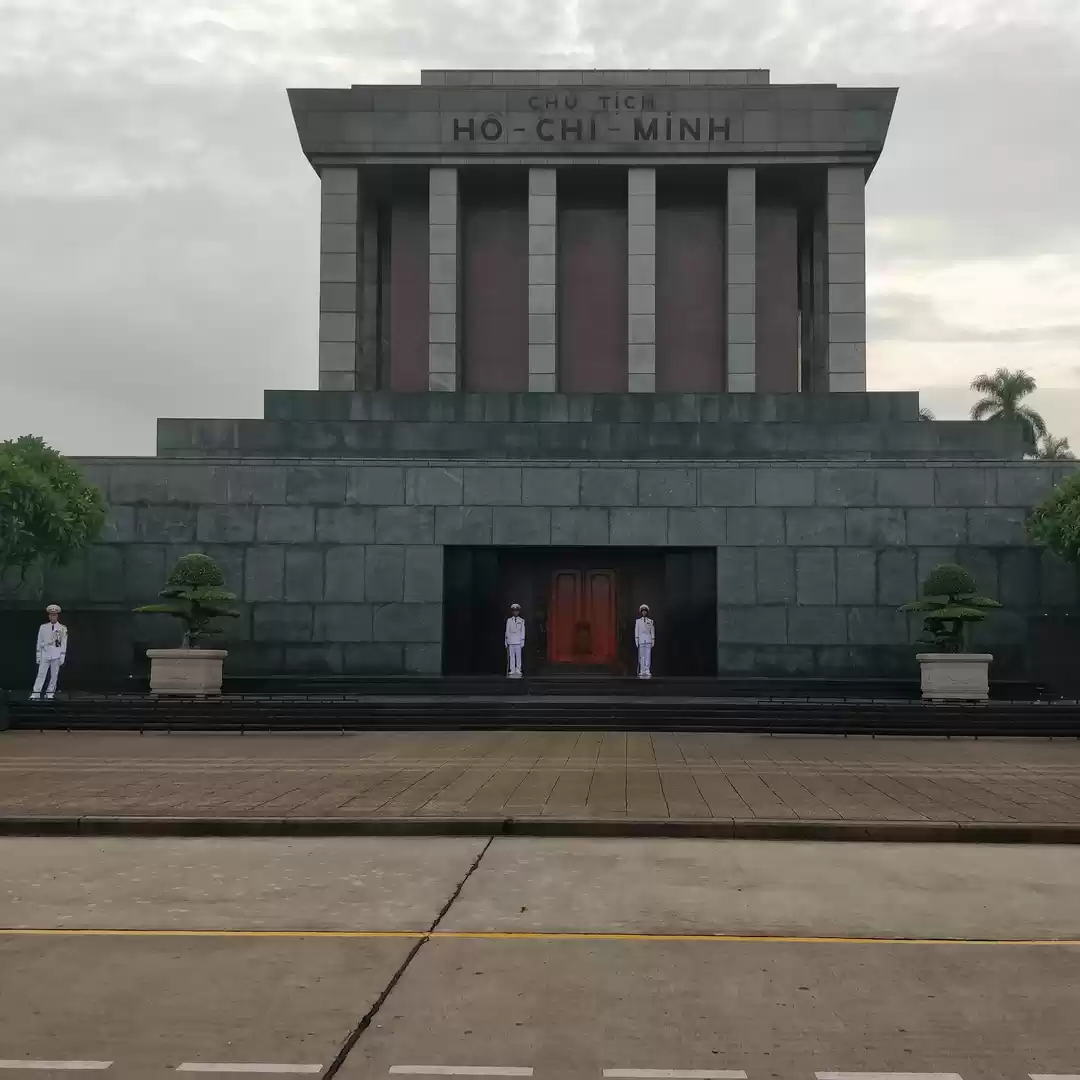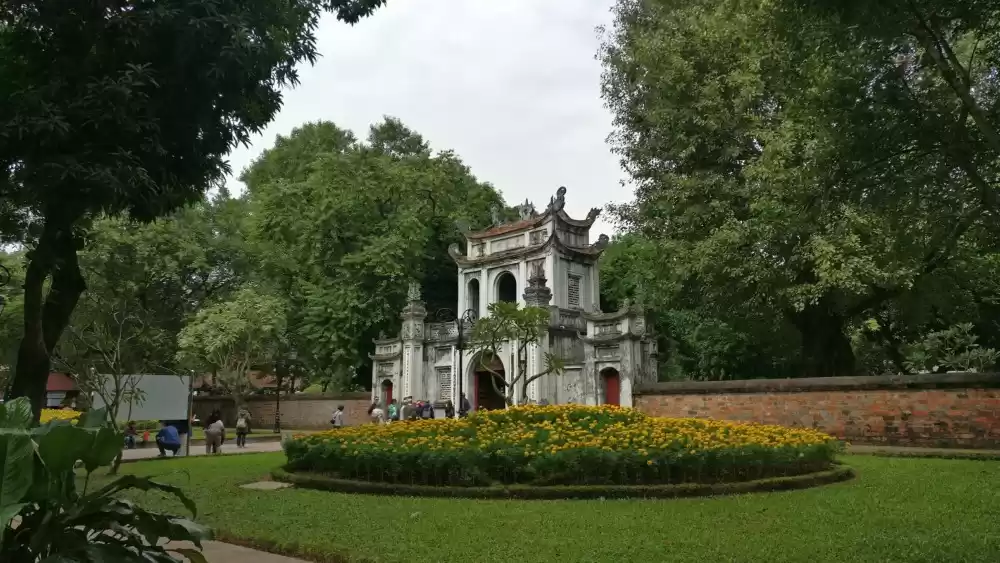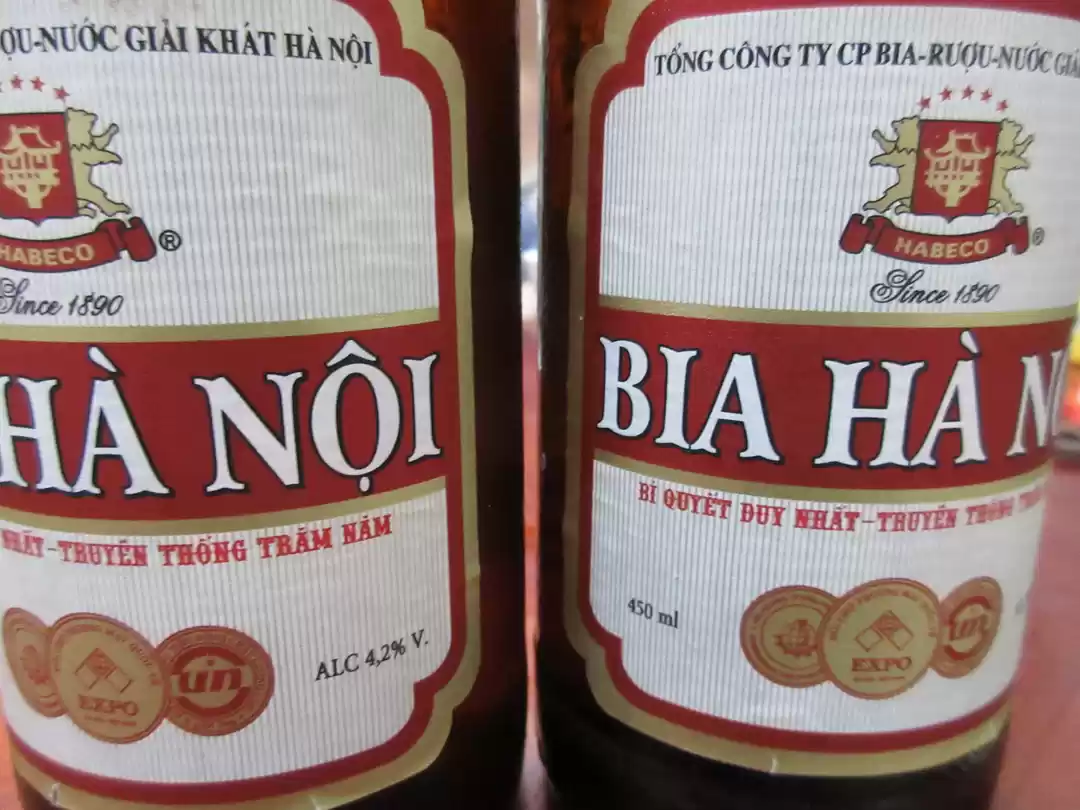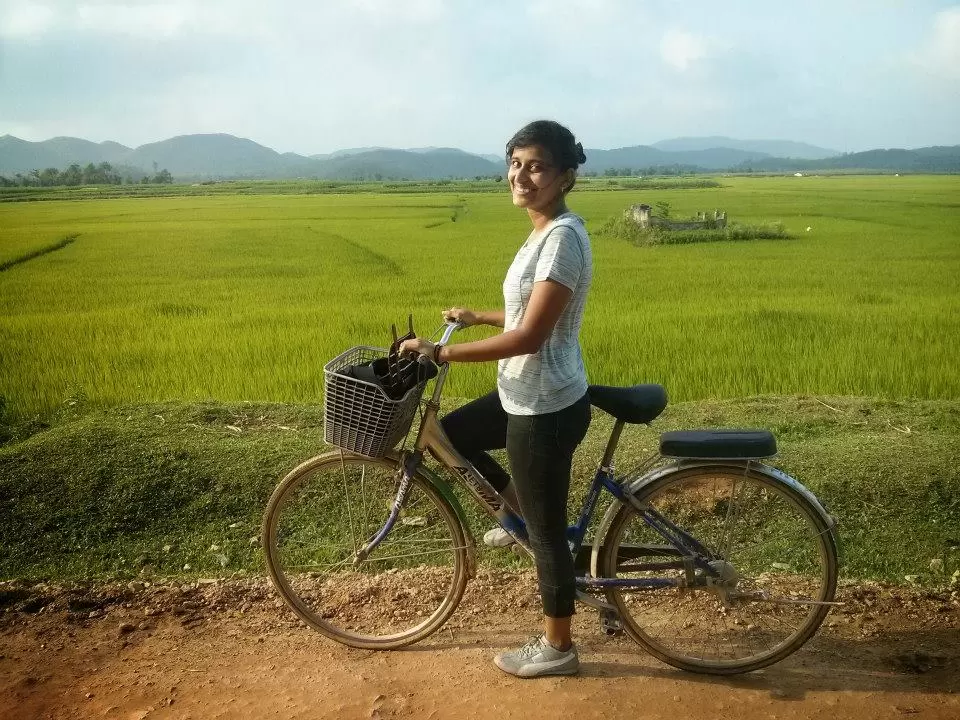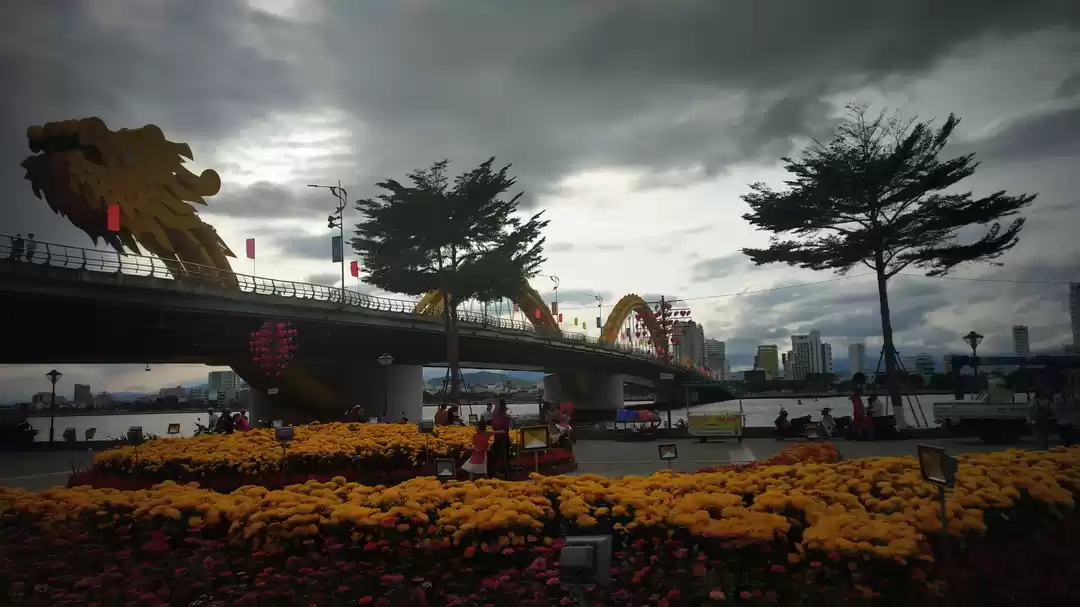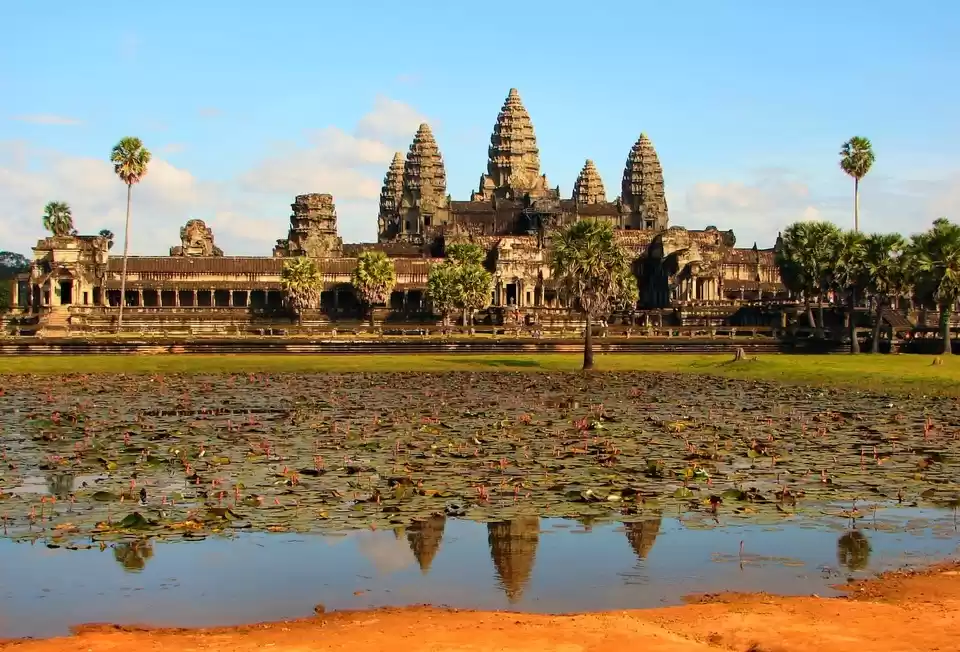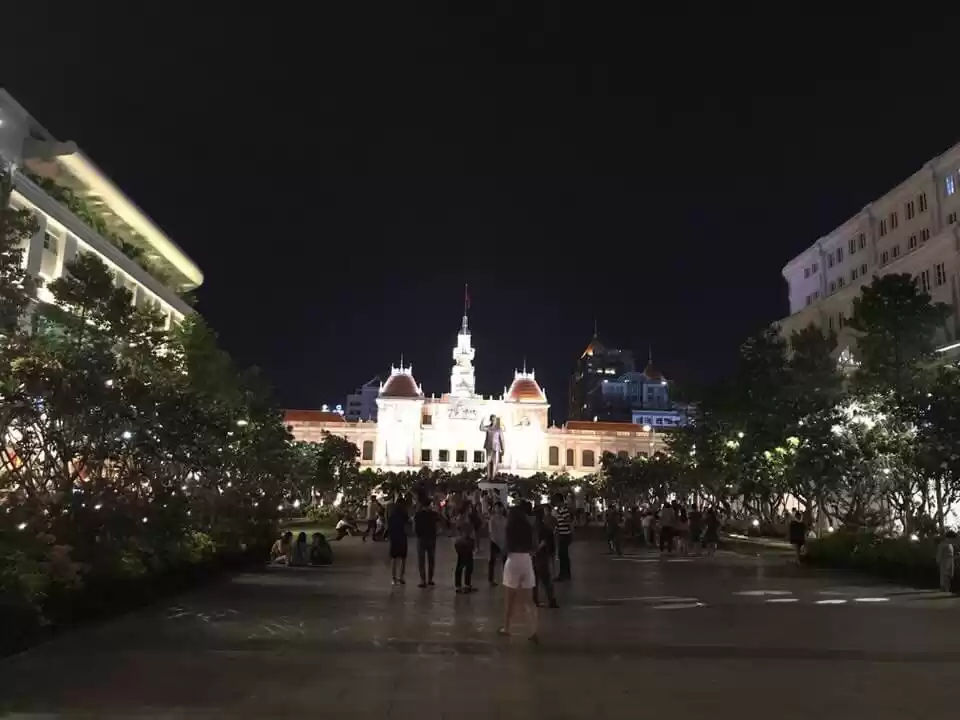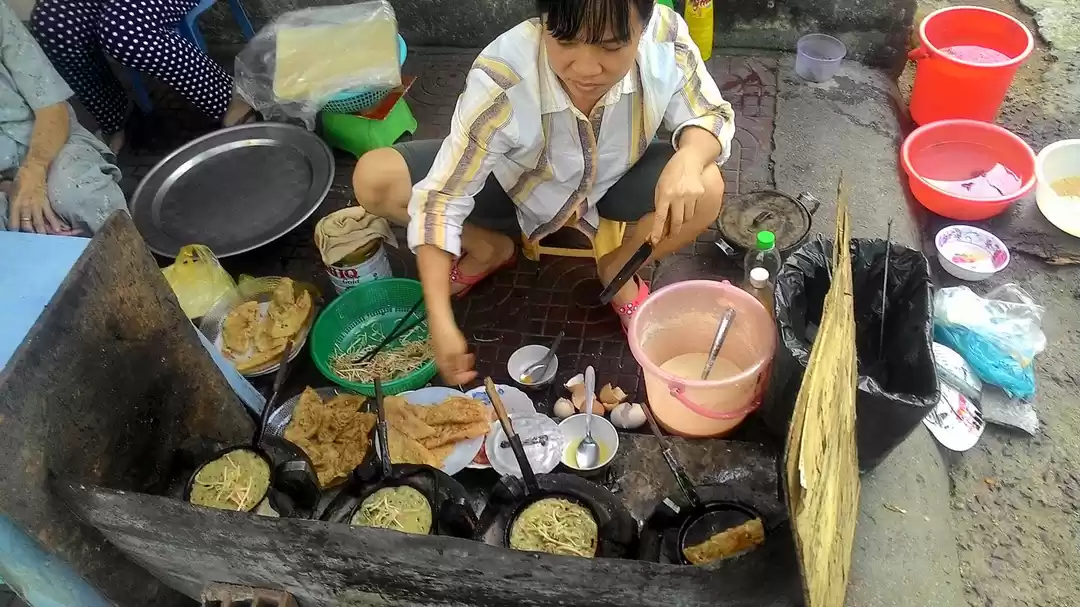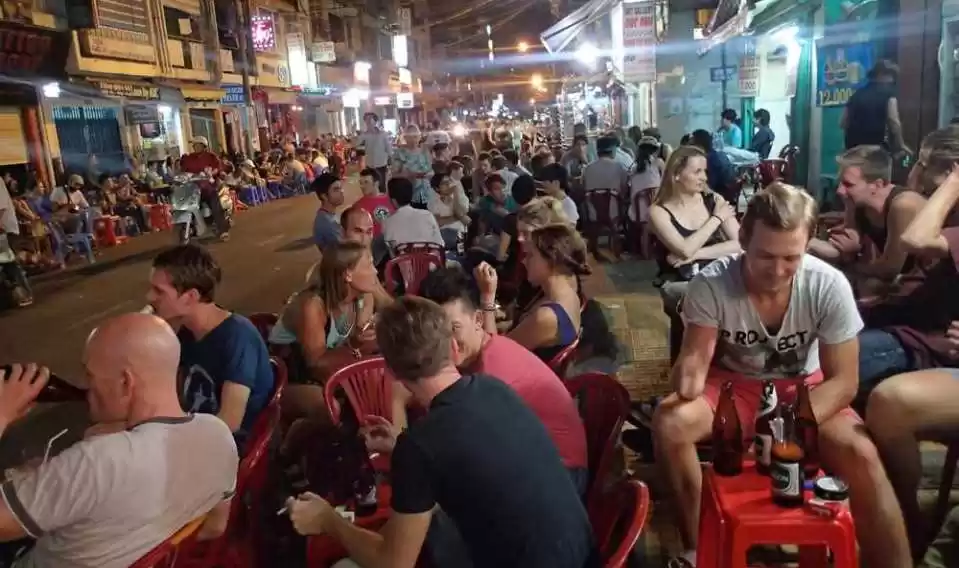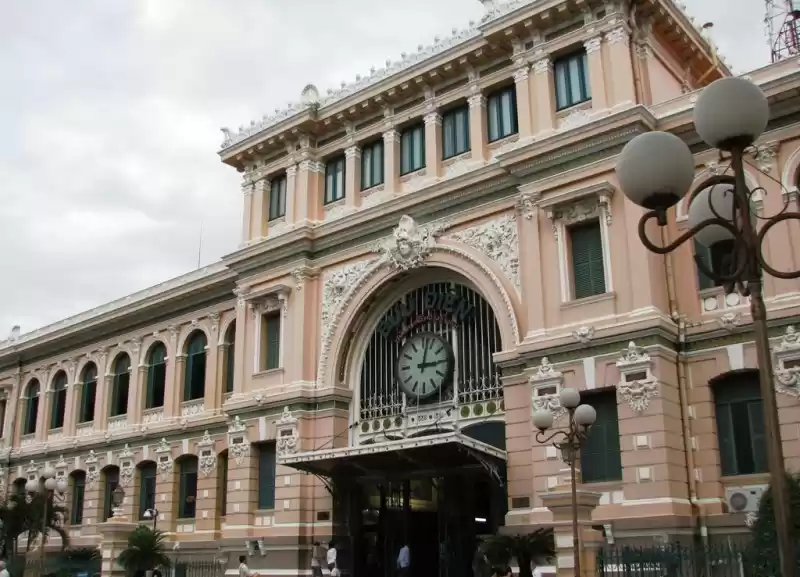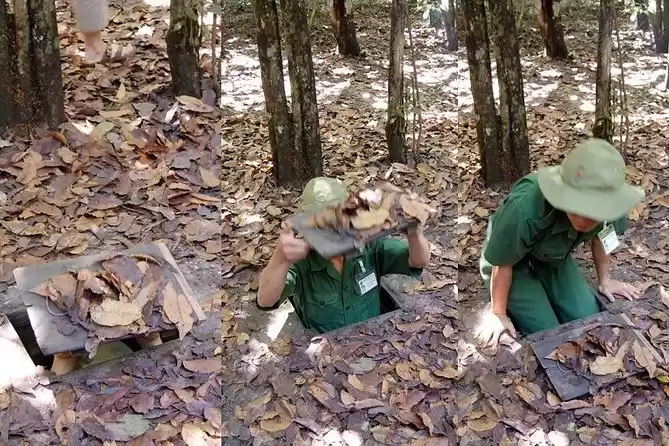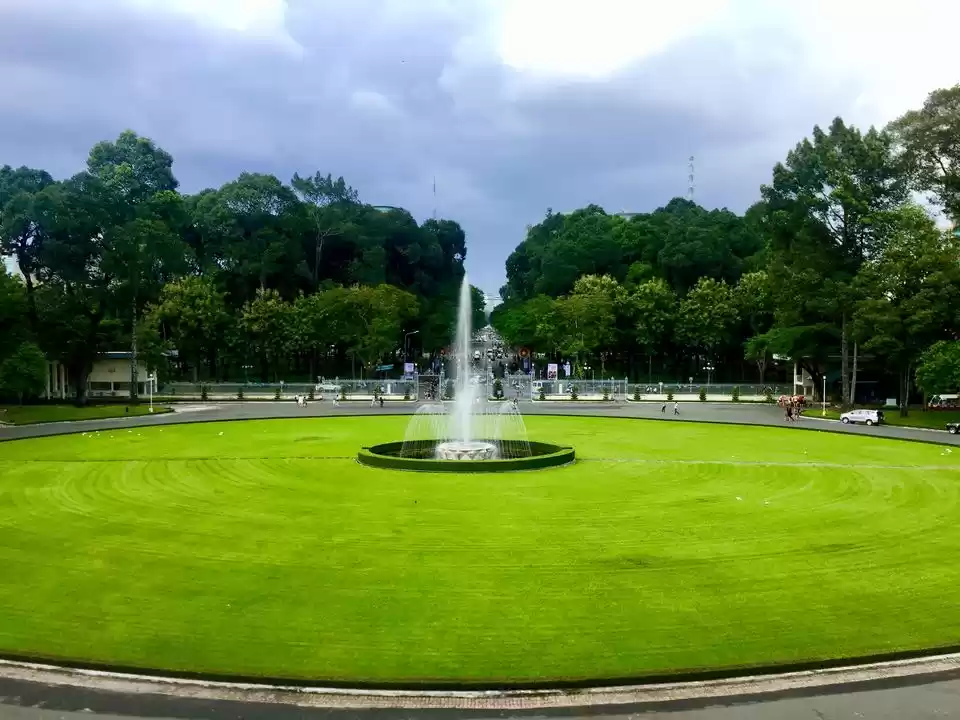Have you ever wondered what it would be like to see the body of one of the most influential and revered leaders in the world? If you are planning to visit Hanoi, the capital city of Vietnam, you have the opportunity to do just that at the Ho Chi Minh Mausoleum, where the embalmed body of Ho Chi Minh, the first president of Vietnam and a national hero, is displayed in a glass sarcophagus. In this article, we will provide you with all the information and guidance you need to visit the mausoleum and learn about the history and significance of Ho Chi Minh and his final resting place.

Who is Ho Chi Minh?
Ho Chi Minh, whose original name was Nguyen Sinh Cung, was born in 1890 in a village in central Vietnam. He was a revolutionary and a politician who dedicated his life to the independence and unification of Vietnam from the French colonial rule and the Japanese occupation. He founded the Viet Minh, the communist-led nationalist movement, and led the resistance against the French and the Japanese during the First and Second Indochina Wars. He also declared the independence of Vietnam in 1945 and became the first president of the Democratic Republic of Vietnam (North Vietnam) in 1954. He was a charismatic and popular leader who inspired millions of Vietnamese people with his vision of a free and prosperous nation. He was also a respected and admired figure in the international arena, especially among the socialist and anti-imperialist countries. He died in 1969 at the age of 79, leaving behind a legacy and a legend that still lives on in the hearts and minds of the Vietnamese people and the world.
Ho Chi Minh was not only a great leader, but also a humble and simple man who lived and worked among the nature and the people. He was known for his modesty, sincerity, and compassion, as well as his wisdom, courage, and determination. He was also a poet, a writer, and a scholar who loved to read and learn about different cultures and languages. He once said, "Nothing is more precious than independence and freedom." He also said, "The people are the true heroes." These quotes reflect his ideals and values that guided his actions and decisions throughout his life.
Where is Ho Chi Minh Mausoleum? How to get there?
The Ho Chi Minh Mausoleum is located in the Ba Dinh Square, the political and historical center of Hanoi, where Ho Chi Minh declared the independence of Vietnam in 1945. The mausoleum is a large and imposing marble edifice that stands out among the green and serene surroundings. The mausoleum is open to the public from Tuesday to Thursday and on weekends, from 8:00 am to 11:00 am. The admission is free, but you need to get a ticket from the ticket office near the entrance of the mausoleum. The ticket office opens at 7:30 am and closes at 10:15 am, or earlier if the tickets run out. The tickets are issued on a first-come, first-served basis, so it is advisable to arrive early to avoid the long queues and the crowds.
To get to the mausoleum, you can take a bus, a taxi, a motorbike, or a bicycle from anywhere in Hanoi. The nearest bus stop is the Ba Dinh Square bus stop, which is served by several bus routes, such as 9, 22, 33, 45, and 50. The bus fare is 7,000 VND (0.3 USD) per person. The taxi fare from the Old Quarter, the main tourist area in Hanoi, to the mausoleum is around 50,000 VND (2.2 USD) per car. The motorbike or bicycle rental fee is around 100,000 VND (4.4 USD) per day. You can park your motorbike or bicycle at the designated parking spots near the mausoleum, which charge around 10,000 VND (0.4 USD) per vehicle.
The history and significance of the mausoleum of Ho Chi Minh
The mausoleum of Ho Chi Minh was built between 1973 and 1975, following the wish of the Vietnamese people to preserve and honor the body of their beloved leader. The mausoleum was designed by a group of Vietnamese architects, who drew inspiration from other mausoleums around the world, such as Lenin's Mausoleum in Moscow and Mao Zedong's Mausoleum in Beijing. The mausoleum is made of gray granite and red marble, and has a square shape with four pillars and a flat roof. The mausoleum is 21.6 meters high, 41.2 meters wide, and 41.2 meters long. The mausoleum has a solemn and majestic appearance, symbolizing the strength and dignity of Ho Chi Minh and the Vietnamese nation.
The body of Ho Chi Minh is preserved in a glass sarcophagus inside a dimly lit hall in the mausoleum. The body is dressed in a khaki suit and lies on a red cushion, with a Vietnamese flag covering his feet. The body is surrounded by four guards, who stand at each corner of the sarcophagus. The body is maintained by a team of Russian and Vietnamese experts, who regularly apply a special chemical solution to the skin and organs. The body is also taken to Russia every year for a thorough examination and renovation. The body is considered a national treasure and a sacred relic, and is treated with the utmost respect and reverence by the Vietnamese people and the visitors.
The mausoleum of Ho Chi Minh is not only a place to see the body of Ho Chi Minh, but also a place to pay respect and homage to the national hero and his contributions to the independence and development of Vietnam. The mausoleum is also a place to witness the rituals and ceremonies that are associated with the mausoleum and the body of Ho Chi Minh, such as the changing of the guard, which is a solemn and impressive ceremony that takes place every hour at the entrance of the mausoleum, and involves the marching and saluting of the soldiers in white uniforms and red berets. The mausoleum is also a place to learn about the history and significance of Ho Chi Minh and his final resting place, as well as the controversy and debate surrounding the mausoleum and Ho Chi Minh's wishes.
The mausoleum of Ho Chi Minh is a source of pride and inspiration for the Vietnamese people, as well as a symbol of the unity and solidarity of the nation. The mausoleum is also a testament to the respect and admiration that Ho Chi Minh enjoys in the international arena, as many foreign leaders and dignitaries have visited the mausoleum and paid tribute to Ho Chi Minh, such as Fidel Castro, Nelson Mandela, Barack Obama, and Xi Jinping.
What to see and do at Ho Chi Minh Mausoleum?
The mausoleum of Ho Chi Minh is not the only attraction in the Ba Dinh Square, as there are many other sights and activities that you can enjoy inside and around the mausoleum complex, such as:
- Visiting the embalmed body of Ho Chi Minh, which is the main attraction of the mausoleum and the reason why most people come to the mausoleum. To visit the body, you need to follow some rules and etiquette, such as dressing modestly, leaving your belongings at the locker room, lining up in an orderly manner, walking slowly and quietly, and bowing respectfully. You are not allowed to take photos, talk, or make any noise inside the hall. You will only have a few minutes to see the body, as the guards will usher you out of the hall. The experience of seeing the body of Ho Chi Minh is a solemn and memorable one, as you will feel the presence and the aura of the national hero and his influence on the Vietnamese people and the world.
- Watching the changing of the guard, which is a ceremony that takes place every hour at the entrance of the mausoleum, and involves the marching and saluting of the soldiers in white uniforms and red berets. The ceremony is a spectacle of discipline and precision, as the soldiers perform their movements and commands in perfect synchronization and coordination. The ceremony is also a display of honor and loyalty, as the soldiers show their respect and devotion to Ho Chi Minh and his mausoleum. The ceremony is a must-see for anyone who visits the mausoleum, as it is a unique and impressive sight that will leave you in awe and admiration.
- Exploring the nearby relics and museums, such as the Ho Chi Minh Museum, which showcases the life and achievements of Ho Chi Minh through exhibits, artifacts, and multimedia. The museum is divided into eight sections, each representing a different period or aspect of Ho Chi Minh's life, such as his childhood, his travels, his struggles, his leadership, his legacy, and his vision. The museum is a great place to learn more about Ho Chi Minh and his role in the history and development of Vietnam, as well as to see some of his personal belongings, such as his books, his clothes, his letters, and his gifts from other countries. The museum is open from Tuesday to Sunday, from 8:00 am to 12:00 pm and from 2:00 pm to 4:30 pm. The admission fee is 40,000 VND (1.8 USD) per person.
Another nearby attraction is the Presidential Palace, which was the former residence and office of the French governor-general and later of Ho Chi Minh. The palace The palace is a beautiful and elegant building that was built in 1906 in the French colonial style, with yellow walls, green shutters, and a red roof. The palace is surrounded by a lush and spacious garden, which features a carp pond, a banana grove, and a variety of flowers and plants. The palace is not open to the public, but you can admire it from the outside and take photos of it. The palace is also a witness to some of the important events and moments in the history of Vietnam, such as the declaration of independence in 1945, the Geneva Conference in 1954, and the reunification of Vietnam in 1976.
- Visiting the stilt house, which was the simple and modest home of Ho Chi Minh from 1958 to 1969, and where he lived and worked among the nature and the people. The stilt house is a wooden structure that stands on stilts above a pond, and consists of two rooms, a living room and a bedroom, and a balcony. The stilt house is furnished with some of Ho Chi Minh's personal belongings, such as his bed, his desk, his books, and his gifts from other countries. The stilt house is a reflection of Ho Chi Minh's personality and lifestyle, as he preferred to live in harmony with the environment and the people, rather than in the luxurious and isolated palace. The stilt house is open to the public from Tuesday to Sunday, from 8:00 am to 11:00 am and from 2:00 pm to 4:00 pm. The admission fee is 25,000 VND (1.1 USD) per person.
- Admiring the One Pillar Pagoda, which is a historic and iconic Buddhist temple that was built by Emperor Ly Thai Tong in 1049, and which symbolizes the lotus flower rising from the water. The pagoda is a small and simple structure that stands on a single pillar in the middle of a lotus pond, and has a curved roof and a statue of the Goddess of Mercy inside. The pagoda is a place of worship and prayer for many Buddhists, who believe that the pagoda can grant their wishes and bless them with fertility and happiness. The pagoda is also a place of beauty and tranquility, as you can enjoy the view of the lotus flowers and the sound of the water. The pagoda is open to the public every day, from 8:00 am to 5:00 pm. The admission is free, but you need to dress modestly and remove your shoes before entering the pagoda.
- Enjoying the surrounding gardens and landscapes, which are filled with flowers, trees, ponds, and statues, and which offer a peaceful and relaxing atmosphere for the visitors. The gardens and landscapes are a part of the Ho Chi Minh Mausoleum Complex, which covers an area of 18 hectares and includes the mausoleum, the museum, the palace, the stilt house, the pagoda, and other monuments and buildings. The gardens and landscapes are a perfect place to stroll, sit, and admire the nature and the architecture, as well as to learn more about the history and culture of Vietnam, as you can see some of the symbols and signs that represent the country and its people, such as the national flag, the national emblem, and the statues of Ho Chi Minh and other heroes and martyrs.

Tips for visiting Ho Chi Minh Mausoleum
To make the most of your visit to the Ho Chi Minh Mausoleum and the other attractions in the complex, here are some useful tips and information that you should know:
- The best time to visit the mausoleum and the other attractions is in the morning, when the weather is cooler and the crowds are smaller. You can also avoid the heat and the rain, which are common in the afternoon and the evening. The best time to see the changing of the guard is at 9:00 am, when the ceremony is more elaborate and longer than the other times.
- The dress code for visiting the mausoleum and the other attractions is modest and respectful, as you are entering a sacred and solemn place. You should avoid wearing shorts, skirts, hats, sunglasses, or any revealing or flashy clothes. You should also cover your shoulders and knees, and wear comfortable and closed shoes. You can bring a scarf or a jacket to cover yourself if needed.
- The security rules for visiting the mausoleum and the other attractions are strict and enforced, as you are entering a high-security and high-profile place. You are not allowed to bring any cameras, phones, bags, or any other items that can cause disturbance or damage to the mausoleum and the other attractions. You can leave your belongings at the locker room near the entrance of the mausoleum, which charges around 10,000 VND (0.4 USD) per item. You should also follow the instructions and directions of the guards and the staff, and respect the rules and etiquette of the mausoleum and the other attractions, such as lining up, walking slowly, and bowing respectfully.
- The photography and souvenir options for the mausoleum and the other attractions are limited and restricted, as you are visiting a place that is not meant for entertainment or commercial purposes. You are not allowed to take photos inside the mausoleum or the stilt house, or near the body of Ho Chi Minh or the statue of the Goddess of Mercy. You can take photos outside the mausoleum or the stilt house, or in the gardens and landscapes, but you should be discreet and respectful. You can also buy some souvenirs and memorabilia from the shops and stalls near the mausoleum and the other attractions, such as postcards, books, flags, and other items, but you should be careful and bargain for the best price.
- The food and drink options for the mausoleum and the other attractions are varied and available, as you are visiting a place that is surrounded by many cafes and restaurants that serve local and international cuisine. You can also find some vendors and kiosks that offer snacks and beverages, such as coffee, tea, water, juice, ice cream, and fruit. You can enjoy your food and drink in the gardens and landscapes, or in the nearby streets and alleys, but you should not litter or make any noise.
Conclusion
The Ho Chi Minh Mausoleum is a must-see attraction for anyone who visits Hanoi, as it is a place where you can see the body of Ho Chi Minh, the national hero and the first president of Vietnam, and learn about his history and significance. The mausoleum is also a place where you can enjoy the other attractions and activities in the complex, such as the museum, the palace, the stilt house, the pagoda, and the gardens and landscapes. The mausoleum is also a place where you can experience the culture and the spirit of Vietnam, as you can witness the rituals and ceremonies, the symbols and signs, and the respect and admiration that the Vietnamese people have for Ho Chi Minh and his mausoleum.
The mausoleum is a place that will leave you with a lasting impression and a memorable experience, as you will feel the presence and the influence of Ho Chi Minh and his vision of a free and prosperous nation.














